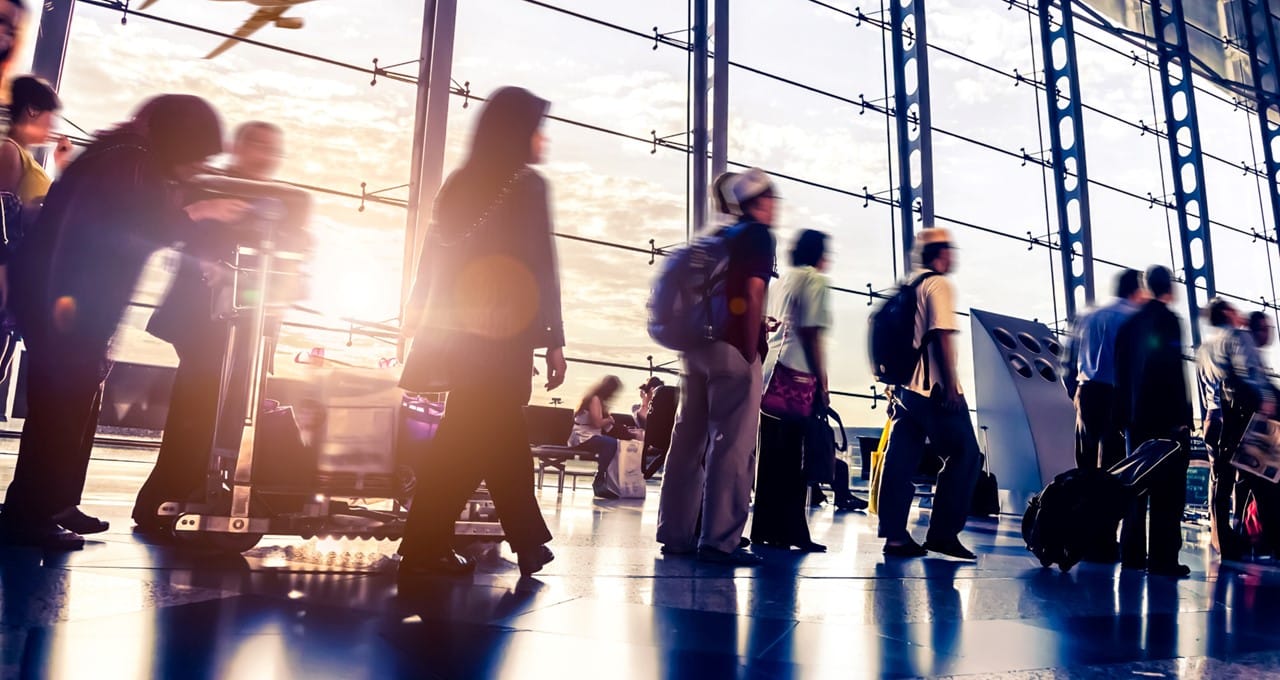Toronto Pearson International Airport, in Ontario, Canada, is the country’s largest and busiest airport, serving some 50 million passengers each year.
To enhance traveler experiences, the airport in June deployed the Zensors AI platform, which uses anonymized footage from existing security cameras to generate spatial data that helps optimize operations in real time.
A member of the NVIDIA Metropolis vision AI partner ecosystem, Zensors helped the Toronto Pearson operations team significantly reduce wait times in customs lines, decreasing the average time it took passengers to go through the arrivals process from an estimated 30 minutes during peak periods in 2022 to just under six minutes last summer.
“Zensors is making visual AI easy for all to use,” said Anuraag Jain, the company’s cofounder and head of product and technology.
Scaling multimodal, transformer-based AI isn’t easy for most organizations, Jain added, so airports have often defaulted to traditional, less effective solutions based on hardware sensors, lidar or 3D stereo cameras, or look to improve their operations by renovating or building new terminals instead — which can be multibillion-dollar projects.
“We provide a platform that allows airports to instead think more like software companies, deploying quicker, cheaper and more accurate solutions using their existing cameras and the latest AI technologies,” Jain said.
Speeding Airport Operations
To meet the growing travel demands, Toronto Pearson needed a way to improve its operations in a matter of weeks, rather than the months or years it would normally take to upgrade or build new terminal infrastructure.
The Zensors AI platform — deployed to monitor 20+ customs lines in two of the airport’s terminals — delivered such a solution. It converts video feeds from the airport’s existing camera systems into structured data.
Using anonymized footage, the platform counts how many travelers are in a line, identifies congested areas and predicts passenger wait times, among other tasks — and it alerts staff in real time to speed operations.
The platform also offers analytical reports that enable operations teams to assess performance, plan more effectively and redeploy staff for optimal efficiency.
In addition to providing airport operators data-driven insights, live wait-time statistics from Zensors AI are published on Toronto Pearson’s online dashboard, as well as on electronic displays in the terminals. This lets passengers easily access accurate information about how long customs or security processes will take. And it increases customer satisfaction overall and reduces potential anxieties about whether they’ll be able to make connecting flights.
“The analyses we get from the Zensors platform are proving to be very accurate,” said Zeljko Cakic, director of airport IT planning and development at the Greater Toronto Airport Authority, Toronto Pearson’s managing company. “Our goal is to improve overall customer experience and reduce wait times, and the data gathered through the Zensors platform is one of the key contributors for decision-making to drive these results.”
Accurate AI Powered by NVIDIA
Zensors AI — built with vision transformer models — offers insights with an impressive accuracy of about 96% compared to when humans validate the information manually. It’s all powered by NVIDIA technology.
“The Zensors model development and inference run-time stack is effectively the NVIDIA AI stack,” Jain said.
The company uses NVIDIA GPUs and the CUDA parallel computing platform to train its AI models, along with the cuDNN accelerated library of primitives for deep neural networks and the NVIDIA DALI library for decoding and augmenting images and videos.
With checkpoints at Toronto Pearson open 24/7, Zensors AI inference runs around the clock on NVIDIA Triton Inference Server, an open-source software available through the NVIDIA AI Enterprise platform.
The company estimates that using NVIDIA Triton to optimize its inference run-time decreased its monthly cloud GPU spending by more than 20%. In this way, NVIDIA technology enables Zensors to provide a high-availability, production-grade, fully managed service for Toronto Pearson and other clients, Jain said.
“Today, lots of companies and organizations want to adopt AI, but the hard part is figuring out how to go about it,” he added. “Being a part of NVIDIA Metropolis gives us the best tools and enables more visibility for potential end users of Zensors technology, which ultimately lets users deploy AI with ease.”
Zensors is also a member of NVIDIA Inception, a free program that nurtures cutting-edge startups.
Visual AI for the Future of Transportation
Among many other customers who use Zensors AI is Ireland’s Cork Airport, which uses the platform to optimize its operations from curb to gate. In June, Zensors AI was deployed across the airport in just 20 days and, in less than four months, the platform helped save about 90 hours of congestion time through proactive curbside traffic management.
“Aviation is just one part of mobility,” Jain said. “We’re expanding to rail, bus and multimodal transit — and we believe Zensors will provide the layer of intelligence to eventually bring AI to all types of brick-and-mortar operators.”
Looking forward, the company is working to incorporate generative AI and large language models into the question-answering capabilities of its platform in a safe, reliable way.
Learn more about the NVIDIA Metropolis platform and how it’s used in smart cities and spaces to build smarter, safer travel hubs, including at Bengaluru Airport, one of India’s busiest airports.
